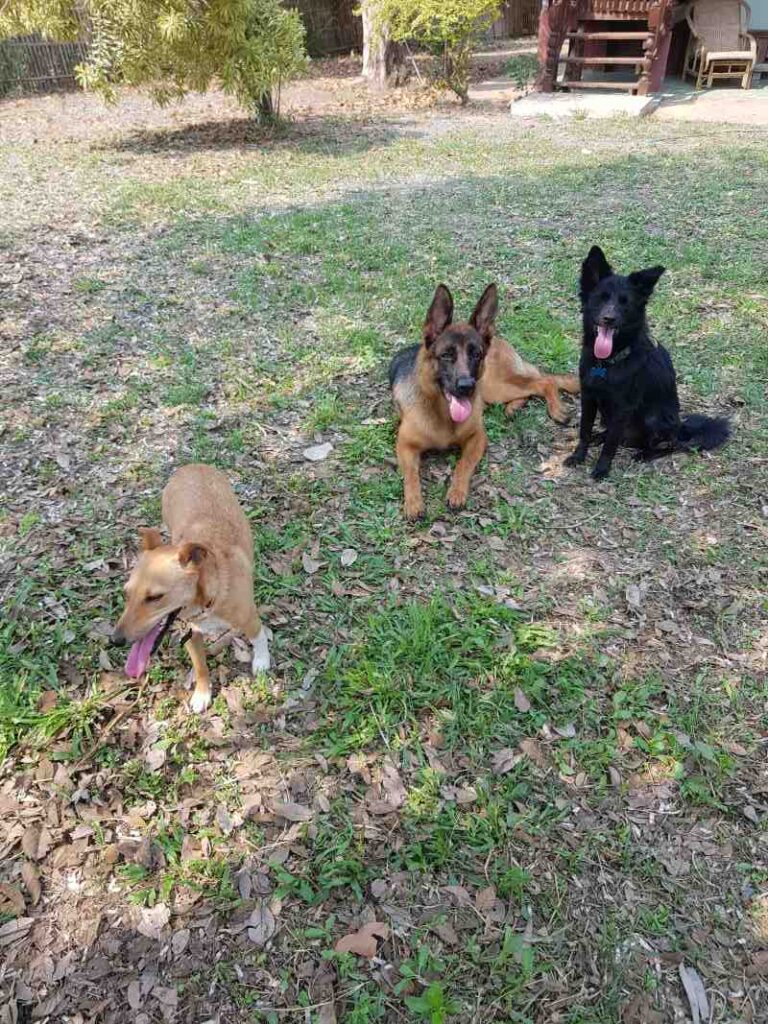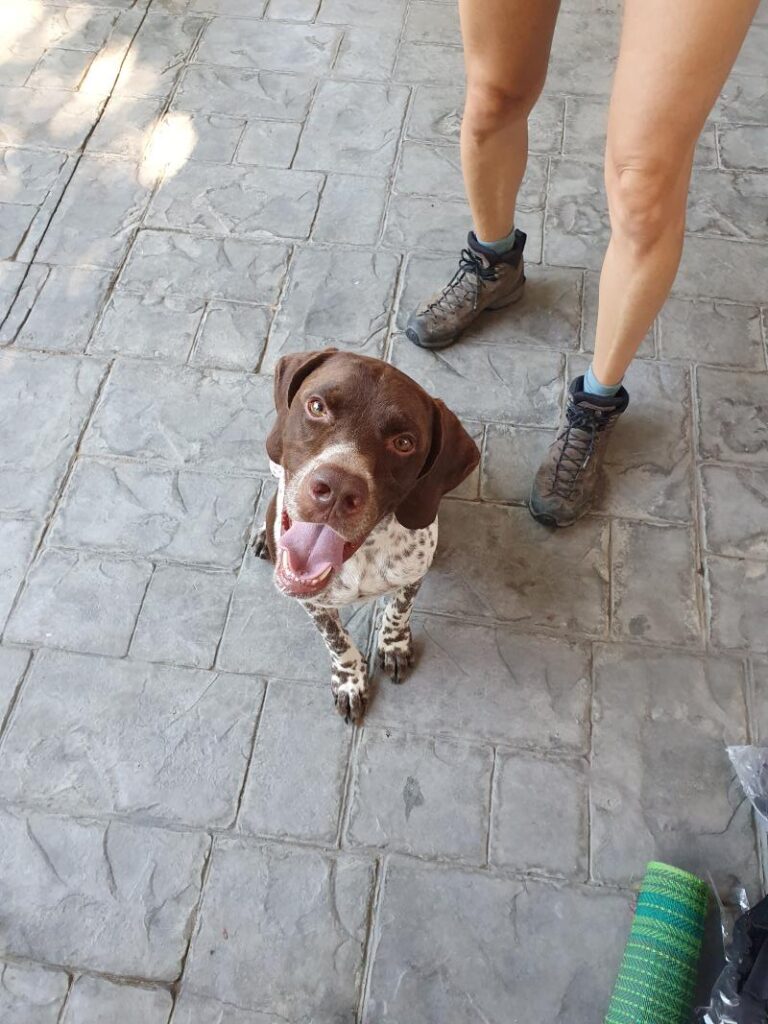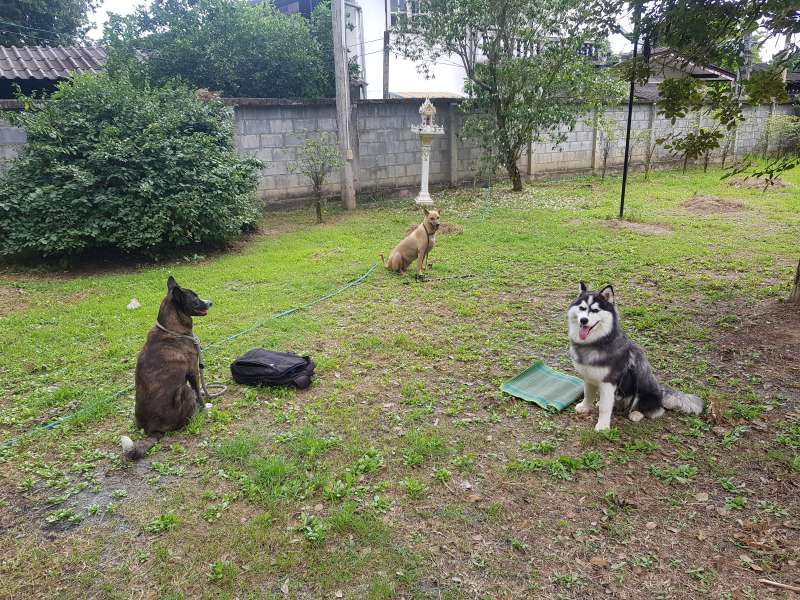Introduction to Canine Memory
How Dogs Encode, Store, and Retrieve Information
Dogs process memories in ways both similar and unique compared to humans. When your dog learns a new command or recognizes a favorite toy, it’s using specialized brain processes to encode, store, and later access that information. Dogs take in details from their environment, including sights, smells, sounds, and emotional cues. These details get sorted by brain regions that specialize in memory, preparing them for future use.
Their experiences—play sessions, feeding times, or meeting new people—are captured through various types of memory systems. Both short-term and long-term memories play important roles in how dogs respond to familiar routines and new challenges. When dogs retrieve memories, they match present cues, like a familiar scent or word, with past experiences. This allows them to react swiftly, like running to the door when they hear a leash jingle.
Comparing Dog and Human Memory
While there are strong similarities, canine memory isn’t identical to human memory. Dogs possess episodic-like memory, helping them recall events, though not with the rich detail or self-awareness of humans. Associative memory stands out in dogs—they quickly learn to link actions with outcomes, such as sitting to receive a treat. Procedural memory, which involves learning skills and habits, also plays a big part in daily life for dogs, just as it does for us.
The brain structures responsible for these functions—like the hippocampus—are shared across both species. However, differences in self-reflective thinking and language mean dogs experience and express memories in unique ways.
Why Understanding Dog Memory Matters
Knowing how your dog remembers shapes how you train and bond together. Effective training uses short sessions with clear cues, making learning easier for your furry friend. Understanding your dog’s memory also helps you support their emotional well-being, especially when addressing fears or building strong, trusting relationships.
Appreciating the way dogs remember allows us to respond to their needs with empathy, creating a deeper connection in daily life. This understanding opens the door to compassionate care and effective, relationship-based training strategies.
Up next, we’ll look at how the dog’s brain makes all this possible.
The Science Behind Dog Memory
The Brain Structures at Play
Dogs use several specialized brain areas to manage memory. Two of the most important are the hippocampus and the amygdala. The hippocampus helps dogs remember places and events. This region is highly involved when dogs recall where their favorite toy is hidden or navigate familiar routes. The amygdala, on the other hand, is key to emotional memories. If a dog had a scary experience at the vet, the memory likely involves the amygdala.
Dogs and People: Structural Brain Similarities
The structure of a dog’s brain is, in many ways, similar to that of a human. Dogs have a hippocampus and an amygdala, just like people. These similarities suggest dogs process memories in ways that resemble our own systems. This is why both dogs and humans can remember people, places, and feelings—even if dogs do it in their own unique style. These resemblances give us insight into how dogs learn and adapt to their environments, helping us support them with understanding and care.
How Memories Form in Dogs
Memory formation in dogs generally follows three core steps: encoding, storage, and retrieval. Encoding is where a new experience is noticed. Storage keeps the experience in the brain for future use. Lastly, retrieval brings the memory back when needed—like remembering the sound of a treat jar being opened. The strength of memories depends on the type of experience, emotions at the time, and how often the event repeats. Emotionally significant or well-reinforced actions are remembered much longer.
With this understanding of what happens inside a dog’s brain, we can better appreciate how dogs recall events and skills in their lives. This knowledge lays the groundwork for exploring the types of memory dogs rely on every day.
Types of Memory in Dogs
Episodic-like Memory
Dogs have a fascinating way of remembering special moments, even though their memory is different from the human version. While people often recall past events with self-awareness, dogs use what is called episodic-like memory. This means your dog can remember specific events and the setting they happened in, such as a favorite walk or a surprise visit from a friend. Studies using delayed response tasks show dogs can recall experiences, but without conscious reflection like humans. This unique ability helps your dog adjust to new routines and recognize familiar situations, even if they don’t remember their own “birthday party” as you might think.
Associative Memory
Associative memory is truly a dog’s superpower. It’s how your pet learns that hearing the food bag means dinner is coming, or that “sit” brings treats. Dogs build bonds between things in their world—sounds, sights, and actions—connecting them with consequences. Training uses this natural skill: classical conditioning links neutral cues to meaningful outcomes, while operant conditioning guides dogs to repeat good behaviors. The strength of these links depends on how rewarding or important the events are, as well as how often they happen. This is why gentle, consistent routines matter so much.
Procedural Memory
Procedural memory is about mastering habits and physical skills. If your dog knows how to fetch, roll over, or even open a door, this talent sits right here. Unlike other memories, these skills tend to stick around for a long time and don’t need much effort to recall. For example, a dog that learned how to navigate an agility course as a puppy can often do so years later, even after a break. These “muscle memory” abilities support daily life and play a big part in successful training sessions.
Understanding these memory types not only enriches our training but also supports stronger, happier relationships with our dogs.
Spatial Memory and Navigation
How Dogs Remember Places and Routes
Dogs have an impressive ability to remember locations, routes, and familiar places. This skill, known as spatial memory, helps them find hidden toys, navigate complex environments, and return to important spots, such as food or resting areas. Dogs use a mix of environmental cues—like landmarks, scent trails, and spatial mapping—to move confidently within their world. Unlike random wandering, this pattern shows a clear use of memory and purposeful navigation.
The Role of the Hippocampus
The hippocampus is the cornerstone of spatial memory in dogs, just as it is in humans. This brain structure helps dogs create mental maps and recall where objects are located. For example, a dog may remember where you keep the treats or how to return home from the park. Studies suggest that the hippocampus is crucial for both remembering past routes and learning new ones, helping dogs adapt if their environment changes.

Everyday Examples of Spatial Memory
You might notice your dog heading straight to the door after a walk or searching a favorite hiding spot for a lost toy. These actions highlight how dogs rely on spatial memory in daily life. When learning new routes, dogs may take a few tries, but soon move confidently and quickly. Dogs also excel at remembering the locations of friends, family members, and rivals—sometimes even after long periods apart.
Spatial memory is not just for games; it helps your dog navigate new places, remember safe paths, and avoid known dangers. By understanding this aspect of canine memory, we can better support and train our dogs, fostering a compassionate and trusting relationship as they explore their world.
Social Memory in Dogs
How Dogs Remember People and Other Animals
Dogs have a special ability to recognize and remember the people and animals they meet. This is called social memory. If you’ve ever seen your dog’s tail wag when a friend comes over—even after months apart—you’ve experienced this in action. Dogs use their senses, especially smell and hearing, to pick up on unique cues from each individual. They remember not just faces, but also the voices and scents that make someone familiar.
Social memory in dogs includes not only humans, but also other animals. When dogs meet another pet or animal multiple times, they build a memory bank based on those experiences. This lasting bond helps dogs feel safe and comfortable with individuals they trust. That’s why dogs often greet a favorite friend with more excitement or calmness than a stranger.
Factors Influencing Memory Strength
The strength of a dog’s social memory depends on several factors. The first is quality of interaction. Dogs are more likely to remember people or animals who give them positive attention, treats, or play. Frequent interactions also help—seeing someone often makes the connection stronger. On the other hand, unpleasant or traumatic experiences can also leave a deep mark on memory.
A dog’s unique personality plays a role too. Some dogs naturally form close bonds and rich memories, while others are more reserved. Age can also impact memory. Puppies are still building their memory skills, while older dogs may take longer to recognize newer faces.
Long-Term Retention of Social Bonds
Dogs are known for their long-lasting social bonds. When a bond is strong, a dog can remember a person or animal for years, even after long periods apart. This long-term retention highlights the importance of kind, repeated, and positive experiences when building a relationship with your dog.
Understanding your dog’s social memory allows you to support stronger, happier connections with them and those around them.
More Than Habits.
Memory is not just for humans—it’s a part of every dog’s world.
Your dog doesn’t just respond to cues out of habit. They recall places, people, emotions, even routines—drawing on a rich memory system shaped by evolution and experience. From recognising your voice to finding that one spot in the garden, their minds are constantly retrieving past moments to navigate the present.
Not all memories are created equal.
Dogs store social connections, emotional imprints, and learned behaviours in different ways—some lasting a lifetime, others fading fast. Whether it’s the joy of a walk or the fear from a harsh word, every memory leaves a trace. And how we teach, love, and live with them shapes what gets remembered.



Understanding how dogs remember helps us train with empathy.
When we align with their cognitive strengths—using repetition, reward, and trust—we don’t just build behaviours. We build bonds. Because memory, for a dog, isn’t just about the past. It’s the map they use to keep finding their way back to us.
Memory Retention and Duration
Differences Across Memory Types
Dogs experience different memory durations based on the type of memory at play. Episodic-like memory helps dogs remember unique events and contexts. These memories are generally shorter lived because they lack the self-awareness seen in humans, but dogs still show signs of recalling past experiences, such as remembering where a favorite toy was last seen. Associative memory, which is crucial for training, allows dogs to link sounds, smells, or sights with outcomes—like knowing treats follow the word “sit.” When these associations are strong, they can last months or even years. Procedural memory, the ability to remember skills and routines, is often the most stable. Dogs can remember how to fetch or perform tricks even after long periods without practice.
What Impacts Memory Duration?
Several factors influence how long a dog retains a memory.
- The type of memory—emotional memories and well-established skills are remembered far longer than brief, neutral events.
- The strength and frequency of the experience—a memory associated with strong emotion or repeated practice will last longer.
- Individual differences like age, breed, and learning style play a role. Young puppies and senior dogs often show shorter retention, while adult dogs with regular mental stimulation perform best.
- Environmental enrichment and bonding with humans or animals increase the strength of lasting memories.
Short-Term vs. Long-Term Memory
Short-term memory in dogs lasts just a few minutes. For instance, a dog may quickly forget a command if it’s not reinforced soon after. In contrast, long-term memory can span months or years, keeping skills, faces, and important locations accessible even after long breaks. This impressive long-term recall supports successful training, emotional well-being, and strong social bonds.
A deeper understanding of these differences offers better support for dogs in daily life, ensuring their unique needs are met with empathy and care.
Age and Breed Influences on Memory
Cognitive Development from Puppyhood to Adulthood
Dogs, much like humans, go through important changes in memory capacity as they grow. Puppies have limited memory skills early on. This means their ability to remember events, locations, or people is not yet fully developed. As dogs mature, their memory improves. Adult dogs often show stronger recall and learning abilities than puppies. This helps them adapt better to their environments and respond more reliably during training.
Age-Related Cognitive Decline
Sadly, aging can bring challenges to a dog’s memory. Senior dogs often experience a slow decline, particularly in spatial and episodic-like memory. You may notice a senior pup forgetting familiar routes or commands, or showing confusion in new places. This decline is a natural part of aging in many species, not just dogs. Early recognition of these changes is key, as it allows owners to provide timely support and comfort.

Breed Differences in Memory Capacity
While many pet parents wonder if memory varies between breeds, research is still catching up on this topic. There is anecdotal evidence that genetics and selective breeding impact how well certain dogs remember or learn tasks. For example, herding breeds may quickly learn movement-related skills, while scent hounds might excel at remembering trails. However, systematic research on breed-specific memory differences remains limited, and more studies are necessary to understand these variations.
Understanding your dog’s age, developmental stage, and possible breed influences helps you care, train, and support them in the best way possible. This awareness leads to more meaningful relationships and improved well-being for your canine companion.
Memory in Training and Learning
Making Training More Effective with Memory
Understanding how dogs remember helps create better training experiences for them. Dogs use different types of memory. Associative memory lets them connect actions with outcomes. For example, dogs quickly learn that sitting on command leads to a treat. Procedural memory, which involves learning habits and skills, helps dogs master tasks like fetching or sitting at the door. Episodic-like memory helps dogs remember the context of specific events, although not as deeply as humans.
If you want your dog to learn faster, it’s helpful to repeat lessons. Frequent, positive reinforcement builds strong associations. Use easy words and gestures. Dogs remember clear, consistent cues better than long or changing ones. Emotional experiences also matter—dogs are more likely to recall happy moments from training. Show patience and kindness; frustration leaves a lasting impact, too.
Tailoring Training to Memory Capacity
Dogs have different memory abilities depending on their age and breed. Puppies need shorter lessons and frequent breaks because their memory capacity is still developing. Senior dogs may benefit from simpler routines and gentle reminders as their memory starts to decline. Some breeds might naturally pick up cues faster due to selective breeding, but individual personalities always play a big part.
Adapting your approach to your dog’s needs shows your understanding and care. Try breaking down complex commands into small steps. Build on your dog’s strengths and pace. This makes learning less stressful and much more fun for your furry friend.
Reinforcement Schedules and Lasting Memories
How often you give rewards matters. Immediate and regular reinforcement works best for most new skills. Once your dog understands a behavior, switch to a variable schedule—giving rewards unpredictably. This keeps the memory strong and increases your dog’s focus. This approach mirrors how many dogs retain skills long-term but can quickly forget less important or confusing lessons.
By considering your dog’s unique memory and learning style, you’ll build stronger training results and a happier, more connected partnership. Understanding memory in dogs also lays the groundwork for supporting their emotional well-being and resilience.
Emotional Memory and Trauma
How Dogs Process and Retain Traumatic Experiences
Dogs have a powerful capacity to remember emotional events. When a dog experiences a traumatic situation, like a loud noise or harsh punishment, their brain encodes these memories in the amygdala. This part of the brain helps store emotional information so the memory can protect the dog in the future. For example, if a dog is frightened by thunder, it may stay anxious during storms even years later. Dogs do not recall trauma in the detailed way humans do, but their memories are strong and can shape ongoing reactions to people, animals, or places.
The Impact of Negative Memories on Behavior and Well-Being
Negative memories can lead to fear-based behaviors, like trembling, hiding, or aggression. If a dog was mistreated by a previous owner, they might remain wary around new people for a long time. Emotional scars from trauma can affect daily life, making it hard for a dog to relax, play, or trust their environment. Persistent fear can lower a dog’s confidence and disrupt the human-dog bond. Understanding that these behaviors often come from past experiences helps us support dogs with patience and care.
Approaches to Addressing Fear-Based Memories
Supporting a dog with fear-based memories requires empathy and consistent positive experiences. Techniques such as gentle socialization, predictable routines, and reward-based training help dogs form new, positive associations. For severe trauma, professional help from a veterinarian or trainer specializing in behavior may be needed. Slow progress and steady encouragement can make all the difference, showing dogs that their world can be safe and loving again.
Understanding how dogs process and respond to emotional memories helps us care for their well-being and adapt our approach, ensuring they feel secure and valued.
Research Methods in Canine Memory Studies
Experimental Approaches for Studying Dog Memory
Researchers use a range of practical experiments to understand how dogs remember. Some of the most common approaches include delayed response tasks and object permanence tests. In delayed response tasks, a treat or toy is hidden while the dog watches. After a short delay, the dog is given the chance to find the hidden item. This method shows how well a dog can recall specific locations and events over brief periods.
Object permanence tests measure whether a dog understands that an item still exists after being out of sight. For example, a ball may be placed under a cup while the dog is watching. If the dog keeps searching for the ball after it disappears, it shows they remember and expect the hidden object to remain there. These practical tests help researchers explore the basics of episodic-like memory in dogs.
Other approaches include asking dogs to recognize familiar versus novel objects or test how long they remember learned commands. These studies give a fuller view of the different memory systems dogs use in daily life.
Challenges in Assessing Non-Verbal Subjects
One major hurdle in canine memory research is communication. Because dogs cannot describe memories with words, scientists must design clever, indirect experiments. Dogs may respond to body language, smells, or sounds instead of spoken commands. Ensuring dogs truly remember rather than simply responding to cues requires careful experimental control.
Researchers must also consider individual differences—personality, motivation, and even stress can affect results. Each study is designed with compassionate care, aiming to reduce anxiety and encourage willing participation.
Recent Advances and Future Needs
Recent studies have started using advanced neuroimaging, like MRI scans, to watch a dog’s brain while they complete memory tasks. These breakthroughs reveal which parts of the brain are most active during learning or recalling events and skills. However, more research, especially long-term and with different breeds and ages, is needed to fully understand canine memory and support lifelong health.
Understanding these research methods is vital for caring for dogs, ensuring their well-being, and improving the human-dog relationship.
Practical Applications and Future Directions
Early Detection of Cognitive Decline
Caring for senior dogs means noticing small changes. As dogs age, they may experience memory challenges—just like people. Signs can include forgetting familiar commands, increased confusion, or difficulty finding toys or food bowls. Recognizing early shifts in memory lets us support our dogs sooner. Adjusting routines, engaging in gentle mental games, and maintaining familiar environments can help. Early detection allows for timely veterinary advice, which leads to better quality of life and comfort for your companion.
Strengthening Human-Dog Bonds
When we understand how dogs remember, our bond grows deeper. Dogs develop trust and affection through routine, positive interaction, and patient guidance. Supporting their unique memory style—like using consistent cues and gentle reinforcement—makes communication clearer. Long-term positive memories are built by sharing safe, joyful experiences daily. This strengthens social memory, helping dogs recognize and feel secure with us and other loved ones.
Future Research Needs
There is a need for ongoing research to fill gaps in our knowledge of canine memory. To advance understanding, scientists are calling for:
- Larger and more rigorous studies, especially those tracking dogs across their lives.
- Advanced neuroimaging studies to explore how different brain regions work with various memory types.
- Investigations across breeds to look for differences in learning and memory. By supporting future research, we can offer tailored care and training, better treat age-related memory decline, and enhance our everyday lives with our dogs.
Understanding and honoring your dog’s unique memory not only brings comfort and support—it reminds us of the joy found in every shared day together.










